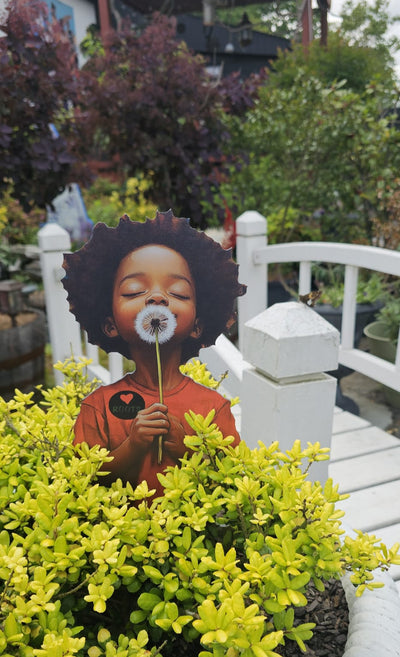Jansen, Marcus Antonius, (Soldier of the Avant-Garde)
Jansen, Marcus Antonius, (Soldier of the Avant-Garde)
"Soldier of the Avant-Garde" by Emory Douglas
35 2/5 × 25 1/5 in , Archival pigment print on cotton paper, limited edition of 75 --unframed
For Marcus Antonius Jansen, rewriting history or at least re-examining it through his personal lens is central to his artistic practice. He understands that history is written by the victors, and that valid dialogue in art history requires multiple perspectives, especially those of black and brown voices who have often been excluded in the discourse of Art History. His subject matter is deeply rooted in formative experiences in both his native Bronx, New York and Moenchengladbach Germany, where he grappled with social upheaval and racism as well as his world travels in his youth. Growing up in the racial and economic paradoxes of the 1970s and 80' in both countries, Jansen absorbed impressions that remain hallmarks of his expressionist style, bridging two worlds with empathy and irony. Graffiti writing, which he discovered as a teenager, taught him to distort and deconstruct traditional paradigms while imagining new ones.
His paintings function as autobiographical social, political, and economic commentaries, tackling themes such as urban gentrification, racial injustice, colonialism, capitalism, economic inequality, and psychological warfare. Through his work, history, iconography, and social mores collide. Born to a Jamaican Mother and later raised by a German father who was a businessman and Historian, Jansen spent his early years in Bronx and Queens New York, in largely Caribbean / immigrant communities. His first exposure to the art world came when a lion he painted in elementary school was exhibited at Lever House in Manhattan at age six. In the late 1970s, the family relocated to Germany. There, in a post War Germany, Jansen attended an all German school, where he was the only child of color. The racism and harassment he endured contributed to his independent character and later became fuel for his art.
Returning to the Bronx in 1982, at the height of the hip-hop movement, Jansen was swept into the energy of graffiti culture. Though just 14 years old, he made contact with pioneer graffiti writers from Manhattan. With a bifocal vision of a crack-ridden New York and a relatively orderly German culture, Jansen began probing the forces of disharmony shaping the U.S. His paintings often feature faceless figures in urban landscapes men in business suits, colonialist archetypes, and other characters that shift with global events. His aerial perspectives, meanwhile, were shaped by his experiences in the U.S. Army, where he was stationed in Germany, South Korea, and the Middle East during the first Gulf War at just 21. --Marcus Antonius Jansen Foundation
- Secure payments
- Low stock - 1 item left
- Inventory on the way


































